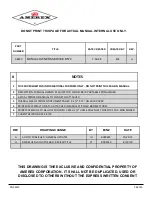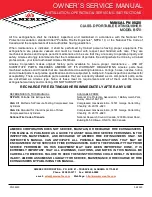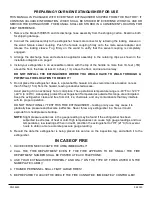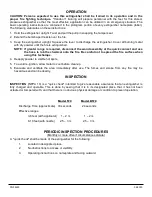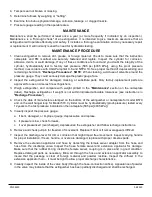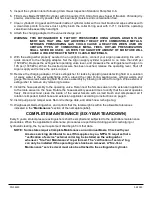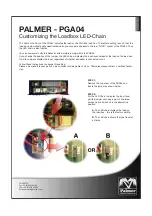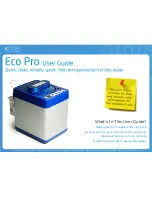
PN 08220
04/2020
4.
Tamper seal not broken or missing.
5.
Determine fullness by weighing or
“
hefting
”.
6.
Examine for obvious physical damage, corrosion, leakage, or clogged nozzle.
7.
Pressure gauge reading in the operable area.
MAINTENANCE
Maintenance shall be performed at least once a year (or more frequently if indicated by an inspection).
Maintenance is a "thorough check" of an extinguisher. It is intended to give maximum assurance that an
extinguisher will operate effectively and safely. It includes a thorough examination and any necessary repair
or replacement. It will normally reveal the need for hydrostatic testing.
MAINTENANCE PROCEDURE
1.
Clean extinguisher to remove dirt, grease, or foreign material. Check to make sure that the instruction
nameplate and FM manifest are securely fastened and legible. Inspect the cylinder for corrosion,
abrasion, dents, or weld damage. If any of these conditions are found and you doubt the integrity of the
cylinder, hydrostatically test to factory test pressure (585 psi [4035 kPa]), using the proof pressure
method, in accordance with CGA Pamphlet C
-
6 and NFPA 10. See proper method of depressurizing and
reclaiming chemical in "
Recharge
Procedures
".
NOTE
: When cleaning, avoid use of solvents around the
pressure gauge. They could seriously damage the plastic gauge face.
2.
Inspect the extinguisher for damaged, missing, or substitute parts. Only factory
-
replacement parts are
approved for use on Amerex fire extinguishers.
3.
Weigh extinguisher, and compare with weight printed in the "
Maintenance
" section on the nameplate
(label). Recharge extinguisher if weight is not within indicated allowable tolerances (see instructions in
"
Recharge Procedure
").
4.
Check the date of manufacture stamped on the bottom of the extinguisher or nameplate for model B570
and on the wall hanger loop for Model 570. Cylinder must be hydrostatically (proof
-
pressure) tested every
12 years to the test pressure indicated on the nameplate (585 psi [4035 kPa]).
5.
Visually inspect the pressure gauge:
a.
if bent, damaged, or improper gauge, depressurize and replace.
b.
if pressure is low, check for leaks.
c.
if over pressurized (overcharged), depressurize the extinguisher and follow recharge instructions.
6.
Remove and check pull pin for freedom of movement. Replace if bent or if removal appears difficult.
7.
Inspect the discharge lever for dirt or corrosion that might impair free movement. Inspect carrying handle
for proper installation. If lever, handle, or rivets are damaged, replace with proper Amerex parts.
8.
Remove the extension applicator and hose by detaching the female swivel adapter from the hose and
hose from the discharge valve. Inspect the hose, female swivel and extension applicator for damage.
Make sure that the rubber O
-
ring inside the female swivel, coupling is in place and in good condition.
Replace damaged parts as necessary. Blow air through the hose and extension applicator assembly to
insure that the passage is clear of foreign material and powder residue. Inspect the diffuser in the
extension applicator horn –
it must be tight to allow proper discharge characteristics.
9.
Visually inspect the inside of the valve body (through the hose
-
connection orifice). Appearance of powder
in the valve may indicate that the extinguisher has been partially discharged and shall be recharged.

